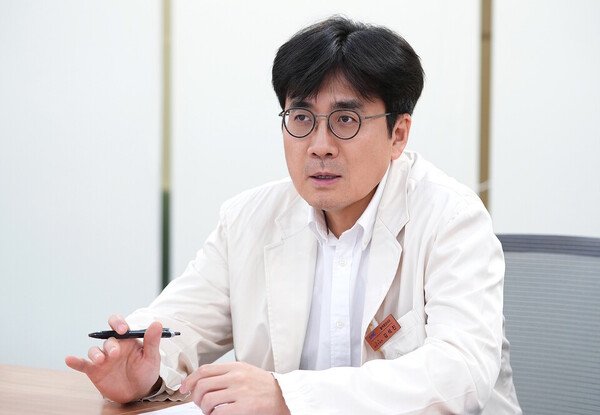Mantle cell lymphoma (MCL) is a disease that, from the time of diagnosis, necessitates a long-term management strategy focused on relapse prevention rather than cure.
As early diagnosis is challenging due to subtle symptoms and the rarity of the disease, both doctors and patients need to be well-informed to plan a long-term, carefully paced treatment strategy.
“MCL is mostly treated on the premise of relapse,” said Kim Seok-jin, professor of hematology-oncology at Samsung Medical Center. “It’s just a matter of whether it happens in a year or 10 years—almost all patients experience relapse.”

According to Kim, MCL, like follicular lymphoma (FL), may appear to be a relatively slow-growing disease, but it is, in fact, a complex condition that combines indolence with aggressiveness and a high relapse rate.
In particular, some patients develop a blastoid variant that is completely unresponsive to conventional treatments, resulting in an extremely poor prognosis with a survival time of less than a year.
However, many patients are able to manage their disease for years with a strategy centered on oral therapies, where the goal of treatment is more about “living with the disease” than “completely eliminating the cancer.”
This treatment approach calls for a personalized, long-term management model that considers the patient’s age, overall health, and treatment tolerability, rather than relying on short-term intensive care.
“MCL, like multiple myeloma, is common in the elderly population, and the use of high-intensity treatments can lead to increased side effects and mortality,” said Kim. “A more effective approach to managing the disease is through regular visits and less toxic therapies.”
Therefore, reversible BTK inhibitors, such as the recently introduced Jaypirca (pirtobrutinib), have emerged as an effective alternative, as they can meaningfully prolong survival after treatment with conventional BTK inhibitors has failed.
Unlike existing irreversible BTK inhibitors, Jaypirca works by selectively binding to the ATP-binding site of the BTK protein, independent of the C481 residue. In the BRUIN Phase 1/2 trial, it demonstrated a significant overall response rate (ORR) of 56.7% and a duration of response of 17.6 months in patients who had failed prior therapy.
“With virtually no options after BTK inhibitor treatment failure, Jaypirca represents a meaningful alternative,” said Dr. Kim. “It is still pre-approval, but it is significant.”
The challenge is a practical one. Due to the small number of MCL patients, there is limited interest from pharmaceutical companies and health authorities, which restricts the potential for expanding treatment options, Kim explained.
In particular, rituximab maintenance therapy and bendamustine-rituximab (BR) combination therapy are not covered by health insurance, despite being commonly used as first-line treatments in clinical practice.
In addition, costly immune cell therapies such as CAR-T therapies and bispecific antibodies are not yet approved for MCL in Korea, making their practical application challenging.
“If we can extend the survival period by maintaining oral treatment even after treatment failure, we can prolong life to the point where it’s unclear whether the cause of death is aging or the disease,” said Kim. “What’s important in MCL treatment is not just the survival rate, but how well the patient’s quality of life is maintained during that time,” he added.

